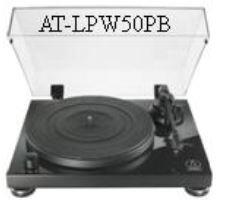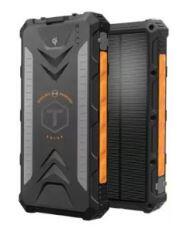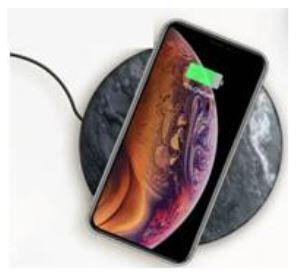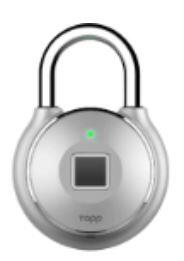Some of My Favorite Sights from CES
[February 2020] Last month, the gigantic CES International Show in Las Vegas was a sort of toy store for adults. The big problem was determining which products were useful, which were just interesting, and which were vaporware.
Here are some comments on what I saw and what you may be seeing soon.
My goal with this article is to share information about some of the newer products shown that I think have specific value for broadcasters to look at.
The real trick at CES is to find things that are more than vaporware – speculative products seeking funding. Historically, 50% of startups will not be back – no market, not enough of a market, totally inexperienced management, no meaningful business/marketing plan, or their money/credit cards run out. Even some products from established manufacturers never quite make it to market.
However, some really interesting things do.
Autonomous Vehicles and 5G
Let me start by dealing with the buzz words for this year: “autonomous vehicles,” “5G,” and “Connected” together. Even though North Hall was filled with autonomous and electric vehicles, we are still a way from production models.
Nevertheless, some of these views of the future were intriguing: batteries free of rare earth materials, solar panels, seats of vegan leather, LIDAR/radar and other sensors to prevent crashes, multidirectional bionic flaps that somehow supply energy to the car, and special audio packages and wrap–around screens to manage, entertain, detect, monitor, and merge with everyone when they are seated.

You literally can see everything on this
48-inch screen – to be set up as you wish.
It will be interesting to see which of these features make it into the next generation vehicle models – and when.
Similarly, even though the FCC expects to vote during the February Open Meeting on its plans to implement an auction to turn the majority of C-Band frequencies into 5G use, full implementation may take three and a half years.
Although some areas already have 5G on lower frequencies, for those with the newest cell phones, many technical issues remain, including the compression of all existing satellite channels onto five or six transponders, and how many cells and how much power is needed to make C-Band frequencies actually penetrate buildings to reach cell phones.
Audio
Most broadcasters like to think they have an ear for good audio.
So, before we leave North Hall we should note the efforts from companies like Sony and Senn-eiser, who are to working to turn autos into immersive sound systems – including the new aftermarket Continental Ac2uated Sound System using Seinnheiser speakerless audio actuators to vibrate the car interior – dash, pillars, door panels, headliner – with truly surround sound.
As usual, some very nice microphones and headphones for studio and field use were available from manufacturers you are familiar with: Audio-Technica, Shure, Sennheiser, and others. While you often can buy five sets of headphones for $100 or so, to combat damage by talent, it is worth looking into the newest models, with high quality drivers and comfortable fit. Pricing ranges from modest to eyebrow raising(!).
If you do not mind getting one built for gaming, the various VR/AR models add a microphone to the package, so some of these might be good for sports broadcasting.
But, there was a lot more to see.
Better Hearing
For example, during the past couple of years, in addition to traditional earphones with better transducers, frequency shaping, and active noise cancelling, a lot of in-ear headphones have been produced with similar qualities, culminating with the popular Apple wireless AirPods.
Dubbed “True Wireless,” countless different versions of these Bluetooth ear buds were on show, ranging from cheap to several hundreds of dollars, the best featuring some of the latest codecs for clean, crisp audio. Many come in rechargeable carry cases. The only negative for broadcasters is that Bluetooth latency is still just a tad too long for live on-air use.
In coming months we plan to highlight some of the best buys.
One that stood out on the show floor was the Audio-Technica ATH-CKS5TW, using the latest high-quality Bluetooth 5.0 codecs and featuring as much as 15 hours on a charge.
You may have noticed that changes in the Law now allow some of these products, like the NuHeara IQbuds2, to be called true “hearing aids,” with the user having the ability to custom program audio to each ear, plus linking to SIRI, Amazon, or Google assistants.
Cart Machines
No, there were no cart machines being shown, nor tape recorders. Just kidding!
 There were turntables. Audio-Technica has added to their growing range of turntables and cartridges with the AT-LPW50PB belt-drive turntable, complete with a matching cartridge and pre-amp. Overall, whether archiving existing disks or airing new product, A-T has some very good turntable choices with a wide range of pricing.
There were turntables. Audio-Technica has added to their growing range of turntables and cartridges with the AT-LPW50PB belt-drive turntable, complete with a matching cartridge and pre-amp. Overall, whether archiving existing disks or airing new product, A-T has some very good turntable choices with a wide range of pricing.
And, sure, if you are really nostalgic for one of the famous SP-10s, for example, they are back, but they are not cheap!
Most audio manipulation and storage has, of course, moved to hard drives, flash drives, and other solid state drives.
 Hyundai brought some new storage media that might well be on your “want” list. Their Ultra Portable Data Storage Fast External SSD fits in your hand.
Hyundai brought some new storage media that might well be on your “want” list. Their Ultra Portable Data Storage Fast External SSD fits in your hand.
You can carry up to 2 TB anywhere you go with a USB 3.1 Type C to USB connector running almost half a Gigabyte per second transfer.
True, you might worry about malware transmission if you use external/portable media for anything other than an in-place backup. Fortunately, there are now applications/services like Secure-data to prevent malware from suddenly wiping out your entire station or group.
Speakers
Speakers are so personal that I hesitate to focus on any specific ones.
As you can imagine, pricing goes from $19 to many thousands of dollars. If you are interested in visiting the suites where the high-end speakers are shown, I would suggest you take a trip to CES next year and spend the day to listen for yourself.
For those that want to “customize” the speakers, a couple of companies were showing new software to customize the way speakers sound, but the ones I tested did not seem to have the process locked down as yet.
On the other hand, Bluetooth speakers of all sorts are now easy to find – they were everywhere! From hanging speakers to sound bars to rock “look-alike” these speakers can extend audio as you work or party in your office, lobby, out on remote sites, or in the backyard.
Among the various Bluetooth speakers shown at CES, the collection at Altec Lansing provides a good idea of the range of what is out there.
Alas, while these are great for bringing audio to remote locations, there are two issues broadcasters need to note: (1) they are Bluetooth, hence as noted above, the latency is a bit much for on-air use, and (2) these guys are so nice, and compact, they will “walk away” from remotes unless you are very careful.
Power
Back in the day, when it seemed the cell phone battery always died during an emergency at a remote transmitter site, your only safe recourse was to buy a spare battery.
In recent years, although many phones feature longer battery life, carrying a small form power bank is still smart.
Such portable units provide great flexibility to keep your phone – or other gear – going as you move around the many places you might find yourself. But 2400 mAh is no longer the standard. Many manufacturers showed power banks from 10,000 to 25,000 mAh, and more, capable of handling cell phones, laptops, and combinations, for several chargings.
 In terms of functionality it is hard to beat the ToughTested ROC combines 10,000 mAh battery with a solar panel to extend the charging – and it can even charge wirelessly, making it unnecessary to carry any cords!
In terms of functionality it is hard to beat the ToughTested ROC combines 10,000 mAh battery with a solar panel to extend the charging – and it can even charge wirelessly, making it unnecessary to carry any cords!
Speaking of cords, the company name matches its cords, designed to survive being heavily used under all conditions.
Want even more backup power? One company had power banks ranging from 2500 mAh up to a 5 kWh size.
Yep, you could put a transmitter needing 5 kW input back up for an hour, while waiting for power restoration or to get a balky generator running. (Smaller transmitters could run for hours.)
The company GoalZero is heavily into the use of batteries and solar panels to bring power to areas where it has been difficult/expensive to do so.
Look Ma, No Wires!
Wireless charging is one of the nicest conveniences is. The concept has proven a bit “touchy” and you may recall that Apple had to cancel its AirPower wireless charger. Other companies kept at it, and a few have products you may want to have on your desk or countertop.
Allsop’s PowerTrack wireless charging mouse pad solves two problems at once. The attractive mouse pad makes any mouse work better/more accurately. The pad will charge any Qi compatible phone or other device right on your desktop. There is even a pair of LEDs to assure you the charging is going on.

If a mouse pad is not your priority, Eggtronic is also producing some excellent wireless chargers. The company, which displayed an entire widescreen TV running on wireless power (Tesla would be thrilled!) has a nice line of charging pads, including some marble Wireless Charging Stones (pick your favorite color) that just look good on your desk or counter.

Equally of note is that Eggtronic has also produced what they said is the smallest compact power sources for laptops and tablets in the world, the Sirius 65W, new, easy to carry unit can even be had with the “blade” connector for the Microsoft Surface tablet.
Shedding Some Light on Things
Remember when LED lights were first available and many of us had a little thumb light on our key ring?
Today’s LED lights are many times brighter, as some tower lighting has been converted to LED lights in recent years. But even small lights and flashlights have much higher light intensity than ever before. Last year, we saw a little one-inch cube that had enough light to illuminate almost anything – and a magnet to allow its use inside a transmitter.
This year, there were a multitude of lights using 3-5-12-or more LED lights, for all sorts of uses. But two stood out as especially desirable for inclusion in the truck or emergency kit.
For those of you in cold climates, having a compact, yet powerful power bank – something able to start a cold, cranky car or shine 330 lumens of light, emergency SOS, or strobe – really is valuable.
 JumpSmart from ChargeHub is a 37,000 mWh lithium battery that will jumpstart up to an 8-cylinder, 5.0 liter vehicle, boat, etc. (as well as cellphones and laptops) several times. At just over $100, this is cheap insurance if you are operating anywhere with a battery that is no longer new.
JumpSmart from ChargeHub is a 37,000 mWh lithium battery that will jumpstart up to an 8-cylinder, 5.0 liter vehicle, boat, etc. (as well as cellphones and laptops) several times. At just over $100, this is cheap insurance if you are operating anywhere with a battery that is no longer new.
When nothing will do except the brightest light in the ‘hood, you will need an Inova T11R from Nite Ize. This rechargeable tactical flashlight/ power bank sends a blinding 5800 lumens (!) in a beam over a quarter mile or recharges gear from the USB port. This one is just under $400.
But no one will outshine you!
Security
Cameras, video recording, motion detectors, streaming alerts, have become very popular of late.
You likely have seen several of the doorbell/ camera units in commercials, and they have sold well. Some videos suggest a fair number of bad guys leave immediately upon seeing the camera.
Finding the right mix of products depends a lot on location, size of the area to be secured, speed of alerting, and the desired response/recordings. Some of the doorbell units will alert you upon any motion in selected areas and save video – or you can take a look on your phone. At some stores, way less than $200 and easy installation will get you started.
Many of them like the Ooma Telo 4G telephone system now feature indoor sensors, and you can even check for water leaks. Additionally, the new Ooma Telo 4G runs on IP or Cell service, so you are covered even if the Internet, or the power itself, goes down.
Lock Technology
Good locks are important.
The downside is often there is a tremendous pile of keys that accumulate. One solution is to purchase locks that are keyed alike, or re-key some of them. But that still leaves the problem of carrying the right keys at the right time.

Modern technology has changed things. Several companies have brought to market locks that can be opened remotely or by Bluetooth. The more current theme is to avoid the “cloud” to reduce the danger of hackers gaining control of the locks.
Most of the models that I saw were not weather-resistant and mostly useful for interior doors. This year I was intrigued by the Tapplock One+ which operates via fingerprint, Bluetooth, or – get this – Morse Code!
Mess up your fingerprint, forget your phone, and you can still open the lock with a Morse Code sequence.

Do stay tuned: a full user report is coming up shortly.
For studio or storage doors, here is another option to consider: The Lockly folks have come up with a rather unique idea: numbers on the Lockly Secure Series are scrambled in four circles which then re-scramble each time a number is pressed, so no one can know your code by watching where you press. Or use your key; it is a door mount, with dead bolt or latch.
Phones, Computers, and AI
If you are into expensive foldable phones, like the new RAZR and Samsung Z Flip, you are going love the foldable notebooks unveiled by Dell and Lenovo.
The ThinkPad X1 Fold has a 13–inch diagonal screen when unfolded and folded looks like a thin book. How durable are these screens (any of them) are going to be a big question, especially when your credit card takes such a big hit.
Anti-malware solutions were shown by several companies. The general idea is to either store a backup in the “cloud” or “lock down” files on the NAS system. The key seems to finding a way to easily open files needed for work without allowing ransomware, etc. to be able to access them. I hope to share more information on these applications as the companies respond to questions as to suitability for broadcast.
Meanwhile, AI is getting bigger and bigger. Samsung alone has invested some $22 Billion to employ about 1,000 AI specialists to work on advanced technology – and as you can see from the news, the plan is to fully integrate the Internet of Things (IoT), linking everything, everywhere.
Both 5G and Artificial Intelligence generated lots of talk – and a lot of speculation. Already some 100 million access points like Alexa, Google Assistant, etc. are in the field in the US.
These can handle access control, lighting, climate control, washer/dryers, refrigerators, dish washers, ovens, showers (not just water temperature – the new Kohler has Harman Kardon Bluetooth speakers!), even toilets. Think of it, and someone is doing it. Or trying.
Health and welfare products were everywhere. Apple has a strong lead in the wellness area with its smartwatch and a growing list of fitness and healthcare features that are able to measure your vitals, your daily steps, EKG readings, sleep apnea issues, or even claiming to electrically stimulate your organs for a higher metabolism.
There are lots of pieces – and some groups of things are working together as standards slowly come together. But do you really want your computer system controlling everything? If you have seen enough movies starting with War Games, you might think twice.
Showing capabilities, there is progress. No, nothing like Data as yet but Samsung showed off the Ballie, a sort of cross between BB-8 and a lottery drum, Ballie acts like a personal robot that rolls around your house, following you around and understands and supports you, your family – even your pets!
But if you are more into “real” people, Samsung’s NEON may be more to your liking. Like your video – game characters, they are computer generated “folks” who talk, behave like humans.
They remember, learn, and can be great (according to Samsung) friends, collaborators, or companions. But more than just a casual relationship, they can also serve as teachers, financial advisors, healthcare providers, concierges and people who will hang out with you without judging. Or, turning into Max Headroom.
Ain’t technology great!
ATSC 3 And 5G
No, I did not forget Television. Let us start by considering ATSC-3, 5G, and how they intersect.
The Advanced Television Standards Committee (ATSC) wants you to know about ATSC-3, aka NEXTGEN TV. It is coming this year to many markets.
Starting with a promise of “20 in 2020” – twenty markets – the ATSC booth announced that NEXTGEN TV was already on the air in markets like Phoenix and Las Vegas. And at least three manufacturers say receivers featuring 4k resolution are due out this summer.
Simply stated, ATSC marries digital broadcasting with 5G Internet streaming to allow a station to present many video and data feature choices to the viewer.

And 8K, Too
Hard to top: LG’s big, beautiful expansive moving image display made up of 200+ screens dominated the main entrance to Central Hall as a warm–up to the brilliance that lies ahead.
Once they sucked you into their booth, they showed off 8K curved OLED screens delivering a beautiful picture. At $60k and with no promise of any 8K content any time soon, it still has not stopped the screen folks from encouraging people to upgrade to “something better.”
I hope you enjoyed this “snapshot” of CES and the things one display. Some of the above items, and more, are scheduled to be reviewed in the coming months, so stay tuned!
– – –
Would you like to know when more articles like this are published? It will take only 30 seconds to
click here and add your name to our secure one-time-a-week Newsletter list.
Your address is never given out to anyone.
